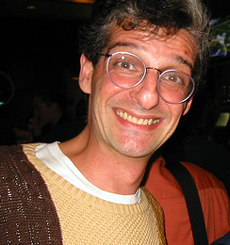Grotesque Realism of the Lower Body
Speaking of Carnivals, read this about real Medieval Carnivals and think how it applies to Blog Carnivals:
http://www.earlymodernweb.org.uk/emn/index.php/archives/2004/08/carnival-and-the-carnivalesque/
Short excerpts:
Carnival and carnivalesque disputed and mocked the ‘normal rules’ of order and morality. Food and violence alike were often essential part of the rituals (such as the mock trials and ‘executions’ of pigs in Venice), as was sex (real and in imagery and innuendo).
---------------
However, other theorists (notably Mikhail Bakhtin, the Russian literary theorist) have offered a more positive (and subversive) analysis: the carnivalesque represents a separate reality, independent of the ordinary hierarchical world, which offers alternatives to it and brings change, a process of liberation, destruction and renewal. Bakhtin also drew attention to its "grotesque realism" and association with the unruly ‘lower body’, the ‘underworld’.
--------------
Drawing on this, Natalie Zemon Davis, historian of early modern France, argued that carnival is more than merely a safety valve: it can reinforce the existing order, but it can also criticise it and sometimes underpin rebellion, depending on the circumstances. The carnivalesque could not always be safely contained; the imagery, ritual language could migrate beyond the set festive occasions, and be used in a variety of ways. It allowed taboo-breaking, created ‘liminal’ (borderline) spaces in which new and alternative ideas could be expressed. And symbolic violence could turn into real violence, against authorities - or Catholics or Protestants or Jews.
So, is it surprising that one of the most populat Blog Carnivals is Carnival of Sin, the newest issue of which is found here: http://www.postmoderncourtesan.com/archives/000560.php




















